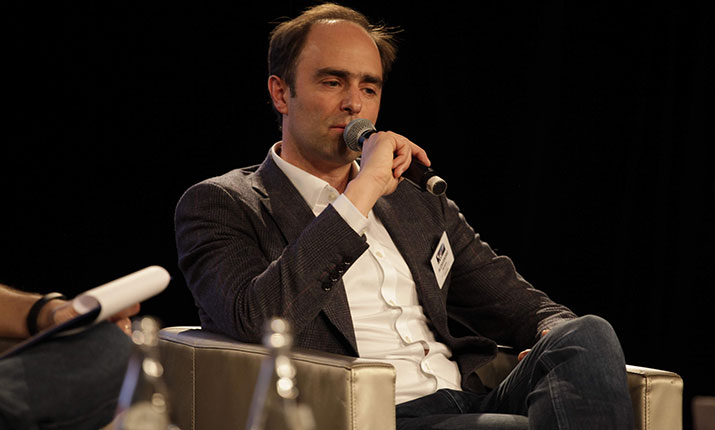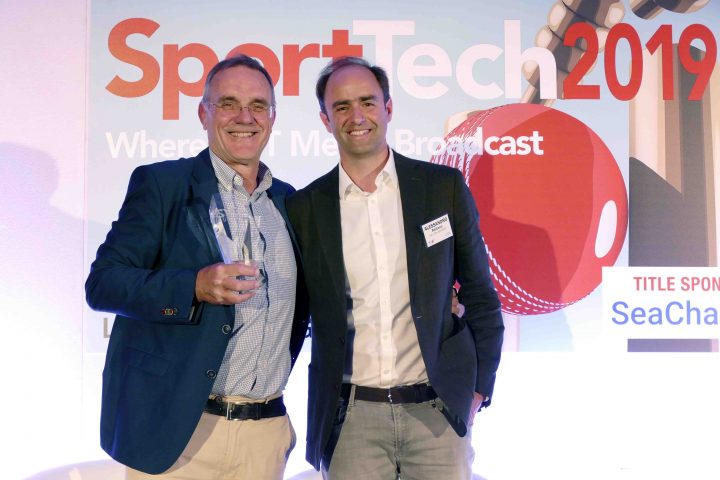Sky Sport Summit 2021: Alessandro Reitano on the importance of live events and key trends for sports production in 2022 and beyond

Ahead of the Sky Sport Summit 2021, in cooperation with SVG Europe, we caught up with Alessandro Reitano, senior vice president for sports production at Sky Germany, and chair of the SVG Europe Advisory Board, to discuss the importance of live events in the age of COVID, the role of technology in sports production, and the key trends to watch out for in the sports broadcasting industry in 2022 and beyond.
Alessandro, this years’ Summit marks the seventh incarnation of the event since its introduction in 2015. Perhaps you can begin by telling us a little about what inspired you to create this event in the first place?
Our original aim was to create an event for the sports broadcasting industry for German speakers within DACH. The core idea of the event was to create a platform within which people involved within the industry could network, and to discuss challenges and specific industry trends in live sports broadcasting. The addition of some interesting talks and keynote speeches seemed like a perfectly logical one, and has been central to the event since the beginning.
And how has the event evolved since 2015?
Throughout the last years, the event has grown organically and has also evolved to accommodate international guests and speakers from the UK and the US, bringing, for example, real-world broadcasting experience from NBC and NFL to DACH; something which has certainly proved to be a highlight for our German-speaking guests. Seeing as most guests are working for companies that are selling their products and services globally, such insights have proved invaluable.
Since the beginning of the COVID pandemic, we’ve seen a marked shift towards digital events across the board. What benefits do you see in staging a ‘live’ event as opposed to a purely digital event as we’ve perhaps become accustomed to over the past 18 months?
Perhaps more than other industries, the sports broadcasting industry is first and foremost a people-driven industry. We are driven by face-to-face contact and personal exchange both behind and in front of the camera. Obviously, the biggest advantage of a live event is the networking aspect, which is pretty much impossible to replicate through the digital realm.
Is there still a place for digital events going forwards?
Absolutely. Digital events might have served their purpose as replacements for their ‘live’ counterparts during seemingly endless rounds of lockdowns, but that’s not to say that digital events don’t have benefits of their own.
I personally see digital events having a strong place in the future, especially if a digital event is focused around exploring one specific topic. If we’re honest, however, the past 18 months have shown how much the sports broadcasting industry lives off of live contact. And that’s precisely why there are even more grounds to be excited for 2021’s Summit.

David Shield and Alessandro Reitano at SVG Europe SportTech, Lord’s Cricket Ground 22 May 2019
What lessons has the industry learned from the previous 12 to 18 months?
The past 12 months have seen seismic change at an accelerated rate both on and off the pitch. Changes have been seen both in the way we consume live sports and also in the way live sports are being produced.
In Germany, for example, a move towards decentralised workflows, software as a service solutions, cloud services and data services have all contributed towards the explosion in tier 2, 3 and 4 sports coverage.
Thanks to lockdowns and resulting decentralisation, the demand for content is higher than ever, and as an industry, we’ve risen to the challenge.
What are the main challenges that have resulted from this explosion in content?
The pandemic highlighted the fact that our industry is short on people. Given the huge leap in demand for content production which has taken place in the last year, there’s been more pressure and workload on individuals to create. For that reason, I’d say that we are short on talent within this industry.
We need to encourage more young people to join our industry through internships and education programmes. We are a people-based industry, and we need to ensure that we attract the right talent going forward. New technologies are there, but we still need people to control and use new technological developments, as well as manning the ground.
Let‘s not forget that a typical Bundesliga match has a lot of camera positions, and not all of them are able to be controlled remotely.
In your opinion, to what extent are the recent technological developments, such as decentralisation and cloud services, here to stay for the long term?
Technology has allowed the sports broadcasting industry to flourish despite the restrictive conditions surrounding COVID. Recent developments have ushered in significant benefits for streamlining content production, and for that reason alone I believe that they are here to stay.
Sports rights are not really getting cheaper, therefore the networks are spending more on rights, and that’s before we’ve even got to creating and editing content. As a result, technical solutions which help content producers to produce smarter, leaner results in a remote manner – which also reduce costs – can only be seen as positives. In the future, it will be difficult to scale production without harnessing these advances in technology.
Is technology also pushing creativity in production?
Technology is undoubtedly enabling us to rethink the production of content and workflows. Thanks to the availability of real-time data, producers are also ably to gamify the viewing experience through encouraging interaction and user experience.
New developments in technology have also empowered lower-tier content producers to create truly special pieces of content without big broadcasting budgets. What’s more, this new technology helps to improve workflows.
In light of the radical changes we’ve observed in the previous year, what trends do you see within the industry in the next six months?
We find ourselves in a moment of acute transformation. While previous months have forced us to rethink how content is produced and how workflows are formed, the next six months will almost certainly see 5G being increasingly adopted.
Having this technology integrated into our broadcasting methods could totally revolutionise the next 12 months and onwards in sports broadcasting. In our industry, new technologies are adopted at a lightning pace. Content is king, but speed is also king. I’m excited to see how quickly these changes shape content production in the coming months and years.
And what do you personally hope for from a broadcasting standpoint for Sky Sport Germany?
I’m a big fan of enhanced storytelling on top of the live event or live 90 minutes. We have to think beyond the 90 minutes. We’ve excelled as an industry in mastering the art of live broadcasting, but we also need to be pushing the boundaries of what’s possible from a narrative standpoint. What about fan engagement? What about target specific content? What about enriching the live environment with more data?
Recent adoptions and advances in technology can help to provide the tools for these developments. Ultimately, however, it’s still down to the ingenuity of dedicated people who will push developments forward.
The Sky Sport Summit 2021 is taking place in Munich on Monday 27 September.
